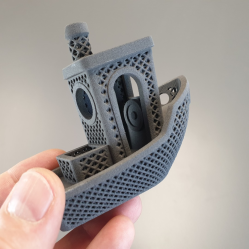The entertainment systems in modern vehicles is akin to a small in-dash computer, and handles all manner of digital content. It probably also incorporates a radio, but increasingly that’s treated as something of an afterthought. There was a time though when any radio in a car was a big deal, and if you own a car from that era it’s possible that you’ve had to coax an aged radio into life. [The Radio Mechanic] is working on a radio from a 1946 Packard, which provides a feast for anyone with a penchant for 1940s electronics.
The unit, manufactured by Philco, is an all-in-one, with a bulky speaker in the chassis alongside the tubes and other components. It would have sat behind the dash in the original car, so some external cosmetic damage is not critical. Less easy to pass off is the cone rubbing on the magnet, probably due to water damage over the last eight decades. Particularly interesting are the controls, as we’re rather enamored with the multicolored filter attached to the tone control. A laser cutter makes short work of recreating the original felt gasket here.
The video below is the first of a series on this radio, so we don’t see it working. Ahead will be a lot more cleaning up and testing of components, and we’d expect a lot of those paper capacitors to need replacement. We can almost smell that warm phenolic smell.
If tube radio work is your thing, we’ve been there before.


















